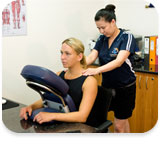Are you aware of these office hazards?
Despite businesses having to comply with state health and safety laws, there are still more than 100,000 serious injuries occurring in Australian workplaces every year.
Injuries that result from these hazards can range from mental stress, to trips and falls and collisions with objects.
A large proportion of these injuries occur in white-collar environments.
Contrary to a common perception that compensation claims largely occur in physically labour-intensive workplaces, 40 per cent of claims have actually been made by employees in administration, professional services, sales, community work and management.
The seven commonly overlooked workplace hazards has listed by SAI Global are:
1. Heavy workloads and high stress levels
Work-related stress is the second-most compensated illness or injury in Australia.
It can lead to physical symptoms such as headaches and fatigue, psychological symptoms such as anxiety, sleep loss and depression, or behavioural symptoms, such as mood swings. These can contribute to long-term health complications such as sleep loss and diabetes.
2. Concealed bullying and harassment
While managers are often seen as the main perpetrators of workplace bullying and harassment, much of it has also occurred between junior-to-mid-level employees, contractors and external suppliers.
Being at the receiving end of bullying and harassment can cause emotional trauma and lead to mental health injuries.
3. Basic clutter
Boxes, plants, bags on floors or courier deliveries placed in access areas can present trip and collision risks, especially if the workers required to manoeuvre around them are distracted.
Employers should organise regular housekeeping activities, risk assessments and inspections to identify workplace hazards.
All workplace items should also have predetermined storage locations when they are not being used.
4. Blocked access to fire safety equipment
Are bookshelves or other furniture blocking access to fire exits, sprinkler heads, fire hoses or fire hydrants?
In the event of an emergency, this can obstruct the efficiency or use of fire safety equipment. Fire safety equipment should have one-metre-clear zones marked by signage and workplaces should have regular safety inspections and see that there is preventative maintenance in place for essential services.
5. Non-adjustable desks, chairs and monitors
According to research led by the University of Sydney, lower back pain accounts for one-third of all work-related disability.
While implementing ergonomic equipment to adapt to workers’ needs can come at an expense, the cost of compensation claims can far outweigh this investment.
6. Extreme workplace temperatures
Complaints relating to temperature are common. Heat and cold stress can impact workers’ health, leading to days off work and even workers’ compensation claims.
Ideally, interior workplaces should be kept at 22 degrees in summer and 24 degrees in winter to be comfortable. Employers should also consider the positioning of desks and workstations, keeping them out of direct hot or cold spots, such as in direct sunlight, or air-conditioning vents and other draughty locations.
7. An employer’s lack of commitment to safety
Even if you have a WHS program in place, has everyone in your organisation seen and understood it?
When workers aren’t educated about potential workplace hazards, risks and good safety practices, illnesses and injuries are more likely to occur. And when management don’t lead by example and engage in unsafe work practices themselves, it is likely that other workers will follow suit.
Small steps are often the hardest to implement of follow up, but they can also be some of the most important.










 About Us
About Us

